Papers by Ewa Kara
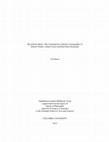
Contemporary operatic scenography has been undergoing broad aesthetic, theatrical and technologic... more Contemporary operatic scenography has been undergoing broad aesthetic, theatrical and technological transformations. My dissertation analyzes the work of three key designer-directors-Robert Wilson, Achim Freyer, and Karl-Ernst Herrmann-in order to investigate the changing relationship between the visual and the theatrical in contemporary opera, as well as opera's place within current trends in theatrical design and broader visual culture. Combining an analysis of current productions with wideranging archival research, I reconstruct and explore these artists' individual stylistic development and their mutual influence. Through this focus on the hybrid figure of the contemporary designer-director, I address two key historical changes in operatic culture: first, the greatly increased importance of scenography and visuality in global opera and second, the emergence of new scenographic idioms, which have rapidly displaced the dominance of historicist and realist conventions in staging. Throughout, I show how Wilson, Freyer, and Herrmann's work has been central to the development of a "new international style" in operatic scenography. Combining close visual analysis with historical contextualization, I examine how this style-characterized by abstraction, rich colors, striking lighting and radical theatrical effects-has transformed the look of opera, while also framing these developments within the longer history of modernist scenography, and the long-standing tensions between stylistic innovation and aesthetic traditionalism. i TABLE OF CONTENTS LIST OF FIGURES ii ACKNOWLEDGEMENTS x NOTE ON TITLES, NAMES, AND USE OF TRANSLATION xiii DEDICATION PAGE xiv 1.22. Schönberg's Erwartung at the Staatsoper Unten den Linden in Berlin in 1997, directed and designed by Robert Wilson, costumes by Frida Parmeggiani. A striking image, very simple and minimal, but designed down to the last detail.

Theatre and Performance Design, 2015
This article presents a close analysis of the operatic productions of the German scenographer Ach... more This article presents a close analysis of the operatic productions of the German scenographer Achim Freyer. Although a crucially important designer--director in opera and a key visual artist in theatre, Freyer’s oeuvre has received comparatively little treatment in Anglophone scholarship. I argue that his work forms part of a broad new paradigm in operatic scenography, which departs from previously dominant modes. This change is a complex one, bound up sociologically and politically with the globalization of opera; its aesthetics include new and reimagined modes of stylization, abstraction and theatricality. While Freyer’s work fits within this model, it must also be analyzed on its own terms, to appreciate the radicalism and creativity of his approach. In examining Freyer’s repertoire of scenographic gestures, I trace the development of a number of key stylistic tropes, including his abiding love of the grotesque, strategies of theatricality and meta-theatricality, modes of abstraction, treatment of the proscenium frame, and use of cubic sets and geometric perspective. In mapping his scenography, I analyze a key set of productions, which exemplify his aesthetic and serve as turning points in his development as a designer-director: Weber’s Der Freischütz (1980), Wilson/Glass’s Einstein on the Beach (1988) and Sciarrino’s Macbeth (2002).
The Routledge Companion to Scenography, 2017
Theatre and Performance Design
Theatre and Performance Design

The Routledge Companion to Scenography, edited by Arnold Aronson, 2017
Contemporary scenography continues to celebrate a pluralism of styles that resists easy codificat... more Contemporary scenography continues to celebrate a pluralism of styles that resists easy codification. New scenographic strategies in design for opera have to a considerable degree displaced previously dominant staging traditions, without, however, ever fully banishing them from operatic stages. Over these last twenty-five years new modes of visuality emerged as a means for opera’s renewal. This article/chapter investigates key trends and innovations in contemporary operatic design since 1990. It focuses in particular on the powerful return of abstraction and stylization, but also explores the shifting language of scenographic practice through the genealogies of postmodern design as well as new forms of historical approaches, the strategies of updating, the use of the video projections, and the ascendance of site-specific productions.

This article presents a close analysis of the operatic productions of the German scenographer Ach... more This article presents a close analysis of the operatic productions of the German scenographer Achim Freyer. Although a crucially important designer–director in opera and a key visual artist in theatre, Freyer’s oeuvre has received comparatively little treatment in Anglophone scholarship. I argue that his work forms part of a broad new
paradigm in operatic scenography, which departs from previously dominant modes. This change is a complex one, bound up sociologically and politically with the globalization of opera; its aesthetics include new and reimagined modes of stylization,
abstraction and theatricality. While Freyer’s work fits within this model, it must also be analyzed on its own terms, to appreciate the radicalism and creativity of his approach. In examining Freyer’s repertoire of scenographic gestures, I trace the development of a number of key stylistic tropes, including his abiding love of the grotesque, strategies of theatricality and meta-theatricality, modes of abstraction, treatment of the proscenium frame, and use of cubic sets and geometric perspective. In mapping his scenography, I analyze a key set of productions, which exemplify his aesthetic and serve as turning points in his development as a designer-director: Weber’s Der Freischütz (1980), Wilson/Glass’s Einstein on the Beach (1988) and Sciarrino’s Macbeth (2002).
Conference Presentations by Ewa Kara

In this presentation I’m interested in investigating the new emphasis on theatricality within an ... more In this presentation I’m interested in investigating the new emphasis on theatricality within an operatic-scenographic context. I will look in particular at two recent productions: the Michael Boyd/Tom Piper Orfeo and the Peter Sellars/Bill Viola Tristan und Isolde. Within this corpus of stagings some of the questions that arise are: Is the confluence of theatricality and scenography capable of transforming opera, not only aesthetically, but also altering the long-entrenched visual preferences of opera-goers, notorious for their conservatism? Can it affect the medium at large? Why do opera managers and directors continue to hired “non-theatre” artists? How do contemporary visual artists address the three-dimensionality of theatrical space differently to traditional painters? To what degree do they overcome the specificity of operatic production that has often seemed to limit designers? How do visual artists’ approaches to theatrical spaces challenge contemporary operatic scenography?
I argue that unlike the majority of theatrical design, operatic scenography has always been a highly spectacular art form, but now the terms of spectacular have changed. Historically, designers have created elaborate scenery intended to impress spectators with splendor, attention to detail, and technical wonders. This centrality of the spectacular was understood as grandeur and magnificence, luxury and opulence, lavishness and extravagance, delight and wonder, pleasure and enchantment, awe and surprise. Although these continue to be key elements in staging operas, they have ceased to be sufficient. Nowadays designers still seek to delight and wonder spectators with inventive visual metaphors, but rather than looking to overwhelm the audience with a plethora of detail, they create theatrically bold designs based on strategic visual concepts. Often these imagistically and metaphorically express tensions within opera, while reflecting the transience and instability of present reality. The new operatic scenography is daring, both conceptually and formally, deeply embedded in contemporary visual culture and visual aesthetics.
This scenography has also altered the function of theatricality in opera. As contemporary scenography has redefined the parameters of the spectacular, theatricality is now a consciously applied device, which underscores opera as a distinctly theatrical medium. Consequently, the opera managers have sought to revitalize opera through the emphasis on theatricality frequently by hiring theatre directors and theatre designers. Such transplantation has often been highly successful. Nevertheless, the opera managers have continued to employ contemporary painters, sculptors, visual artists, and architects, including Georg Baselitz, Anselm Kiefer, Bill Viola, Olafur Eliasson, Anish Kapoor, Zhang Huan, Jun Kaneko, Frank Gehry, Zaha Hadid, and Ryuji Nakamura.

My paper focuses on the operatic scenography of Karl-Ernst Herrmann, in particular on his recent ... more My paper focuses on the operatic scenography of Karl-Ernst Herrmann, in particular on his recent productions (design and co-direction) of the Mozartian canon. Herrmann is, of course, among the most influential of German designers, famed for his remarkable collaborations with Claus Peymann and Peter Stein and his long-lasting influence on the visual modes of German theatre. However, Herrmann—in common with many of his design peers—has found the opera to offer opportunities to combine design with direction. I want to examine this recent oeuvre as a way of identifying the specific elements of his visual poetics, and secondly to contextualize his work in relation to the wave of recent designer-directors, such as Robert Wilson and Achim Freyer, in the operatic field.
By means of a close analysis of Herrmann’s reinterpration of Mozart operas—first at the Théâtre de la Monnaie, Brussels and later at the Salzburg Festival—I trace the specific ways in which Herrmann transplants the spacious and visual experiments from his previous theatrical work. Authorial continuity is, however, not the only way to understand his visual aesthetic in the operatic context. I argue that Herrmann’s work can also be seen in terms of a new dominant paradigm in operatic stage design, understandable both as a “post-Wilsonian” moment – marked by apparently disconnected but precisely constructed images in abstract spaces – but also as his mise-en-scène’s incorporation of/assimilation into certain ubiquitous elements in contemporary visual culture. This raises anew the question of the politics of form and of style. Does Herrmann’s audacious operatic-scenographic style do more than mobilize particular moments of beauty and precision in the service of opera’s endlessly renewed seductive spectacle? Or is there a residual political and aesthetic force to his intensely visual reworking of the operatic canon?

My paper presents a close stylistic analysis and a historical contextualization of the German des... more My paper presents a close stylistic analysis and a historical contextualization of the German designer-director Achim Freyer’s production of Freischütz by Carl Maria von Weber at the Bayerische Staatsoper in Munich (1980). I focus in particular on the audience reaction prompted by Freyer’s radical scenographic and directorial choices. Freyer’s carnivalesque and eroticized aesthetics, applied to Weber’s romantic opera, created an uproar among the conservative Bavarian opera audience, a reaction comparable to that accorded Chéreau’s Bayreuth Ring at around the same time, and one amplified by the national TV broadcast of Freyer’s opera. Using contemporary press reports and archival materials, including audience correspondence and surviving photographic and video materials, I analyze the dialectic of artistic innovation and conservative reaction which coalesced around this production.
This encounter cannot be seen in a vacuum, however. I contextualize the confrontation by briefly putting Freyer’s aesthetic in the context of shifts in operatic scenography in the last thirty years, suggesting that one useful way of understanding his work is in terms of his treatment of space, theatrical and visual language that uses carnival motifs, movements, and gestures. While not wanting to suggest that Freyer’s aesthetic aim is to shock, I examine the Freischütz production in detail, drawing out the way in which the stage design interacts with the theatrical. In particular I focus on how Freyer deploys the particular mode of "theatre as theatre" that allows him, in defiance of traditional operatic norms, to contaminate the high-brow with the "low" challenging operatic styles of performance.
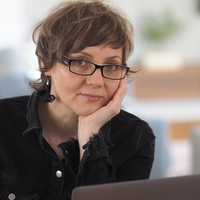
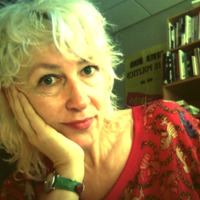



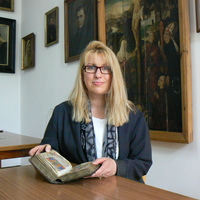
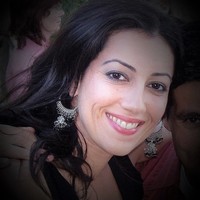
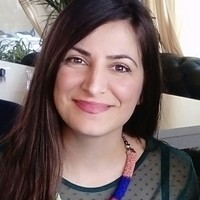

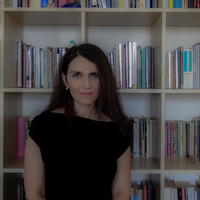
Uploads
Papers by Ewa Kara
paradigm in operatic scenography, which departs from previously dominant modes. This change is a complex one, bound up sociologically and politically with the globalization of opera; its aesthetics include new and reimagined modes of stylization,
abstraction and theatricality. While Freyer’s work fits within this model, it must also be analyzed on its own terms, to appreciate the radicalism and creativity of his approach. In examining Freyer’s repertoire of scenographic gestures, I trace the development of a number of key stylistic tropes, including his abiding love of the grotesque, strategies of theatricality and meta-theatricality, modes of abstraction, treatment of the proscenium frame, and use of cubic sets and geometric perspective. In mapping his scenography, I analyze a key set of productions, which exemplify his aesthetic and serve as turning points in his development as a designer-director: Weber’s Der Freischütz (1980), Wilson/Glass’s Einstein on the Beach (1988) and Sciarrino’s Macbeth (2002).
Conference Presentations by Ewa Kara
I argue that unlike the majority of theatrical design, operatic scenography has always been a highly spectacular art form, but now the terms of spectacular have changed. Historically, designers have created elaborate scenery intended to impress spectators with splendor, attention to detail, and technical wonders. This centrality of the spectacular was understood as grandeur and magnificence, luxury and opulence, lavishness and extravagance, delight and wonder, pleasure and enchantment, awe and surprise. Although these continue to be key elements in staging operas, they have ceased to be sufficient. Nowadays designers still seek to delight and wonder spectators with inventive visual metaphors, but rather than looking to overwhelm the audience with a plethora of detail, they create theatrically bold designs based on strategic visual concepts. Often these imagistically and metaphorically express tensions within opera, while reflecting the transience and instability of present reality. The new operatic scenography is daring, both conceptually and formally, deeply embedded in contemporary visual culture and visual aesthetics.
This scenography has also altered the function of theatricality in opera. As contemporary scenography has redefined the parameters of the spectacular, theatricality is now a consciously applied device, which underscores opera as a distinctly theatrical medium. Consequently, the opera managers have sought to revitalize opera through the emphasis on theatricality frequently by hiring theatre directors and theatre designers. Such transplantation has often been highly successful. Nevertheless, the opera managers have continued to employ contemporary painters, sculptors, visual artists, and architects, including Georg Baselitz, Anselm Kiefer, Bill Viola, Olafur Eliasson, Anish Kapoor, Zhang Huan, Jun Kaneko, Frank Gehry, Zaha Hadid, and Ryuji Nakamura.
By means of a close analysis of Herrmann’s reinterpration of Mozart operas—first at the Théâtre de la Monnaie, Brussels and later at the Salzburg Festival—I trace the specific ways in which Herrmann transplants the spacious and visual experiments from his previous theatrical work. Authorial continuity is, however, not the only way to understand his visual aesthetic in the operatic context. I argue that Herrmann’s work can also be seen in terms of a new dominant paradigm in operatic stage design, understandable both as a “post-Wilsonian” moment – marked by apparently disconnected but precisely constructed images in abstract spaces – but also as his mise-en-scène’s incorporation of/assimilation into certain ubiquitous elements in contemporary visual culture. This raises anew the question of the politics of form and of style. Does Herrmann’s audacious operatic-scenographic style do more than mobilize particular moments of beauty and precision in the service of opera’s endlessly renewed seductive spectacle? Or is there a residual political and aesthetic force to his intensely visual reworking of the operatic canon?
This encounter cannot be seen in a vacuum, however. I contextualize the confrontation by briefly putting Freyer’s aesthetic in the context of shifts in operatic scenography in the last thirty years, suggesting that one useful way of understanding his work is in terms of his treatment of space, theatrical and visual language that uses carnival motifs, movements, and gestures. While not wanting to suggest that Freyer’s aesthetic aim is to shock, I examine the Freischütz production in detail, drawing out the way in which the stage design interacts with the theatrical. In particular I focus on how Freyer deploys the particular mode of "theatre as theatre" that allows him, in defiance of traditional operatic norms, to contaminate the high-brow with the "low" challenging operatic styles of performance.
paradigm in operatic scenography, which departs from previously dominant modes. This change is a complex one, bound up sociologically and politically with the globalization of opera; its aesthetics include new and reimagined modes of stylization,
abstraction and theatricality. While Freyer’s work fits within this model, it must also be analyzed on its own terms, to appreciate the radicalism and creativity of his approach. In examining Freyer’s repertoire of scenographic gestures, I trace the development of a number of key stylistic tropes, including his abiding love of the grotesque, strategies of theatricality and meta-theatricality, modes of abstraction, treatment of the proscenium frame, and use of cubic sets and geometric perspective. In mapping his scenography, I analyze a key set of productions, which exemplify his aesthetic and serve as turning points in his development as a designer-director: Weber’s Der Freischütz (1980), Wilson/Glass’s Einstein on the Beach (1988) and Sciarrino’s Macbeth (2002).
I argue that unlike the majority of theatrical design, operatic scenography has always been a highly spectacular art form, but now the terms of spectacular have changed. Historically, designers have created elaborate scenery intended to impress spectators with splendor, attention to detail, and technical wonders. This centrality of the spectacular was understood as grandeur and magnificence, luxury and opulence, lavishness and extravagance, delight and wonder, pleasure and enchantment, awe and surprise. Although these continue to be key elements in staging operas, they have ceased to be sufficient. Nowadays designers still seek to delight and wonder spectators with inventive visual metaphors, but rather than looking to overwhelm the audience with a plethora of detail, they create theatrically bold designs based on strategic visual concepts. Often these imagistically and metaphorically express tensions within opera, while reflecting the transience and instability of present reality. The new operatic scenography is daring, both conceptually and formally, deeply embedded in contemporary visual culture and visual aesthetics.
This scenography has also altered the function of theatricality in opera. As contemporary scenography has redefined the parameters of the spectacular, theatricality is now a consciously applied device, which underscores opera as a distinctly theatrical medium. Consequently, the opera managers have sought to revitalize opera through the emphasis on theatricality frequently by hiring theatre directors and theatre designers. Such transplantation has often been highly successful. Nevertheless, the opera managers have continued to employ contemporary painters, sculptors, visual artists, and architects, including Georg Baselitz, Anselm Kiefer, Bill Viola, Olafur Eliasson, Anish Kapoor, Zhang Huan, Jun Kaneko, Frank Gehry, Zaha Hadid, and Ryuji Nakamura.
By means of a close analysis of Herrmann’s reinterpration of Mozart operas—first at the Théâtre de la Monnaie, Brussels and later at the Salzburg Festival—I trace the specific ways in which Herrmann transplants the spacious and visual experiments from his previous theatrical work. Authorial continuity is, however, not the only way to understand his visual aesthetic in the operatic context. I argue that Herrmann’s work can also be seen in terms of a new dominant paradigm in operatic stage design, understandable both as a “post-Wilsonian” moment – marked by apparently disconnected but precisely constructed images in abstract spaces – but also as his mise-en-scène’s incorporation of/assimilation into certain ubiquitous elements in contemporary visual culture. This raises anew the question of the politics of form and of style. Does Herrmann’s audacious operatic-scenographic style do more than mobilize particular moments of beauty and precision in the service of opera’s endlessly renewed seductive spectacle? Or is there a residual political and aesthetic force to his intensely visual reworking of the operatic canon?
This encounter cannot be seen in a vacuum, however. I contextualize the confrontation by briefly putting Freyer’s aesthetic in the context of shifts in operatic scenography in the last thirty years, suggesting that one useful way of understanding his work is in terms of his treatment of space, theatrical and visual language that uses carnival motifs, movements, and gestures. While not wanting to suggest that Freyer’s aesthetic aim is to shock, I examine the Freischütz production in detail, drawing out the way in which the stage design interacts with the theatrical. In particular I focus on how Freyer deploys the particular mode of "theatre as theatre" that allows him, in defiance of traditional operatic norms, to contaminate the high-brow with the "low" challenging operatic styles of performance.